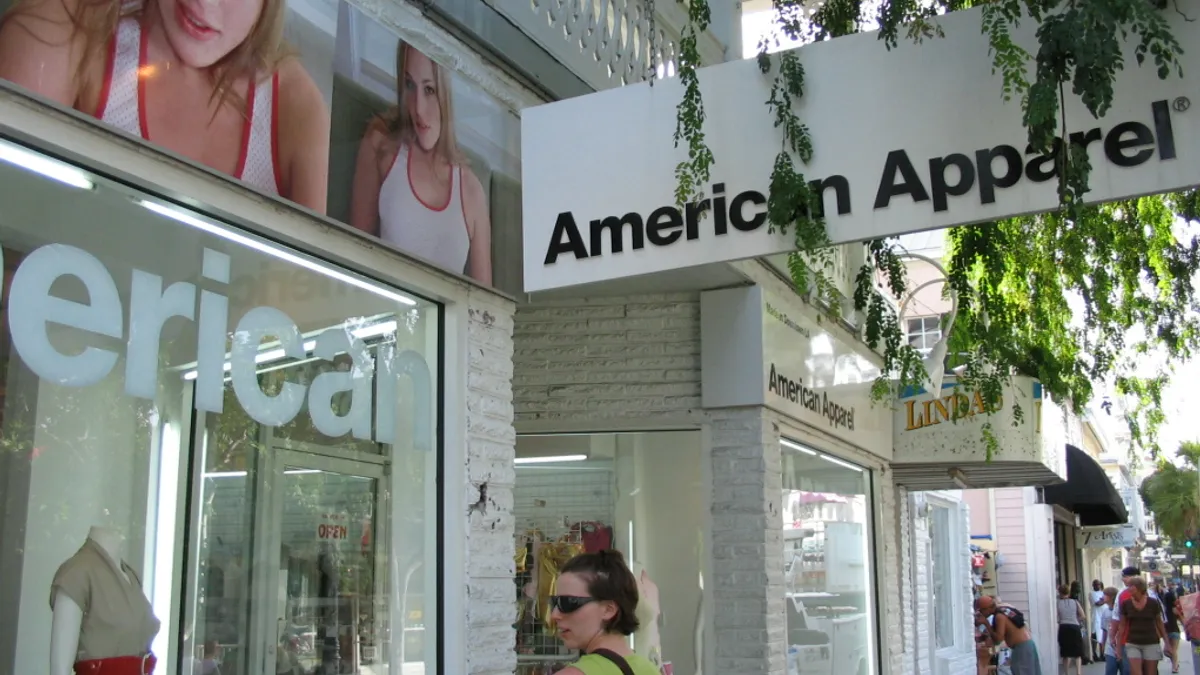Dive Brief:
-
American Apparel said Friday that it is out of Chapter 11 bankruptcy, becoming a private company.
-
Through the Chapter 11 process, the retailer, now American Apparel LLC, converted some $230 million of bonds into equity, left with $40 million of exit capital, and has a commitment for $40 million in asset-backed financing. Its interest costs were pared down by $20 million. More details about the retailer’s reorganization can be found here.
-
During its Chapter 11 proceedings last month, investment firms Hagan Capital Group and Silver Creek had offered a $300 million bid that topped the value range that American Apparel’s investment bank estimated in court documents. But it also came with the stipulation that controversial founder Dov Charney would return, and didn’t enjoy the support of the retailer’s stakeholders.
Dive Insight:
After years of falling sales and accumulating debt, American Apparel's bankruptcy process now forms the foundation of its turnaround. As a private company, the retailer will be sheltered somewhat from the pressures of investors, who can seize on quarterly reports and leave a company little wiggle room at a time when it needs patience for longer term changes to take hold.
And there’s much work to be done. American Apparel’s target demographic, young women in their teens and maybe into their 30s, have moved on from the retailer’s distinct eighties and nineties vibe. And many consumers are less interested in spending much money on apparel, preferring to prioritize experiences and tech gadgets (i.e. their mobile phones).
What the retailer has been selling is outdated clothing, along with some basics, at prices past what’s available at fast-fashion retailers, which also happen to have the computer programs and logistics capabilities to get the clothes that young women do want to their stores.
And while its made-in-U.S.A. manufacture is an important—maybe even indispensable—aspect of its apparel and an important differentiator, it must also differentiate its quality and design to attract shoppers to pay up because domestically manufactured clothing is quite a bit more expensive than goods made overseas.
CEO Paula Schneider said in a statement that the retailer will soon be ready to show customers what it’s really made of.
"I'm pleased to announce that our plan of reorganization, which was supported by our unsecured creditors' committee and our bondholders, unanimously accepted by our voting creditors and confirmed by the Court, has now enabled us to emerge from bankruptcy in just a few short months, Schneider said in a statement. “This is the start of a new day at American Apparel.”














